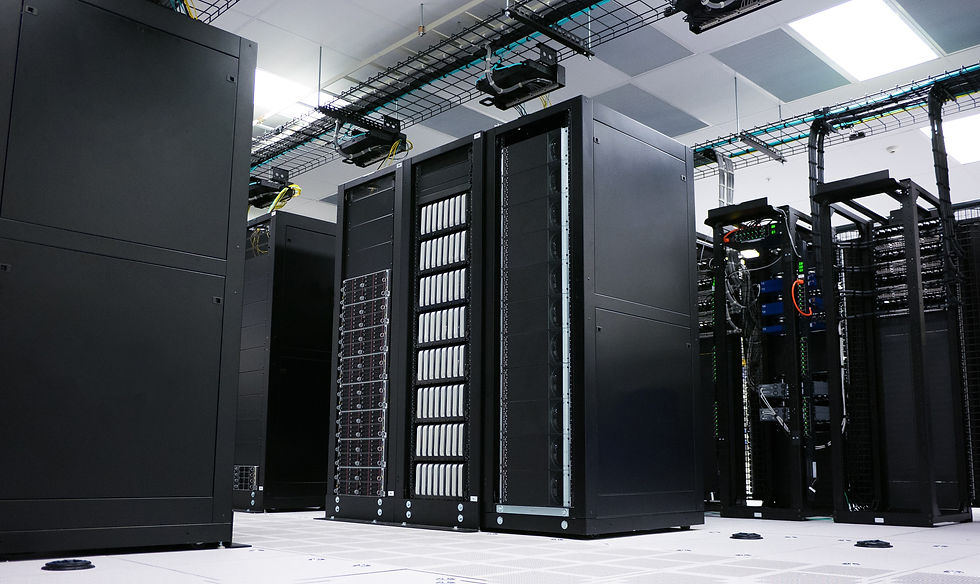How Healthcare Facilities in San Antonio, TX, Ensure Patient Safety with Temporary Cooling During HVAC Downtime
- Rankin Group

- Jul 20
- 4 min read
Healthcare facilities prioritize patient safety as healing sanctuaries: every element, from surface cleanliness and air quality to temperature regulation, has a direct impact on the health of patients, staff, and visitors. Temperature management is particularly noteworthy; it ensures comfort and avoids potential difficulties.
Maintaining a stable but controlled atmosphere in hospitals, clinics, and other healthcare facilities is more than just a convenience; it is crucial to patient outcomes. Patient safety depends on consistency; any deviation from ideal environmental circumstances risks jeopardizing recovery and potentially exacerbating health issues.
HVAC systems (heating, ventilation, and air conditioning) are indispensable in various healthcare environments, including hospital rooms, surgical suites, and intensive care units. They work ceaselessly to develop and maintain optimal conditions.
These systems regulate temperature, humidity, and air quality, ensuring patient safety and allowing medical staff to work comfortably.
Risks Associated with HVAC System Downtime
HVAC systems are crucial in hospital settings. They establish stable, controlled environments that promote patient safety and well-being.
Downtime in these systems, which disrupts operations, can have significant effects; patients, personnel, and critical medical equipment are all at risk during such periods. These factors highlight the importance of understanding the associated vulnerabilities to implement proactive mitigation strategies.
Threats to Patient Safety During Downtime
Downtime in HVAC systems directly impacts patient safety since it jeopardizes temperature regulation. Proper heating or cooling is crucial in healthcare settings for vulnerable groups such as the elderly, babies, and individuals with compromised immune systems.
Patients may experience discomfort, worsening of existing diseases, or even life-threatening complications without proper heating or cooling. Extreme heat causes disorders such as dehydration and heatstroke, whereas cold temperatures exacerbate respiratory issues, resulting in heart stress.
Impact on Medical Equipment and Technology
Many medical gadgets and technologies in modern healthcare facilities require precise ambient conditions to operate efficiently. HVAC system downtime upsets these conditions, compromising equipment functioning or causing complete failures.
Consider imaging equipment: MRI machines and CT scanners generate a lot of heat when operating, so they rely significantly on cooling systems to prevent overheating. Without sufficient cooling, this equipment may shut down, delaying crucial diagnostic processes and jeopardizing patient care.
Effects on Staff Performance and Morale
Healthcare personnel work in high-pressure conditions that require focus, efficiency, and resilience, making HVAC system downtime a significant disruptor. It degrades employee performance and morale while exacerbating current issues.
Temperature extremes cause physical discomfort, weariness, and dehydration, all of which contribute to diminished productivity and an increased chance of errors in patient care.
The Importance of Temporary Cooling Solutions
Role in Maintaining Temperature Regulation
Maintaining ideal temperature management in healthcare facilities is not just an issue of comfort; it is critical to patient care. Temporary cooling solutions take center stage, ensuring consistent indoor temperatures during HVAC system downtime or unforeseen events.
Temporary cooling systems are adaptable and scalable, making them ideal for healthcare environments of different sizes and complexity. They can address specific concerns in a single ward, maintain temperature management throughout the complex, or bridge gaps during HVAC emergencies.
These characteristics constitute a vital safeguard for ensuring operational stability in healthcare settings.
Prevention of Equipment Overheating
Modern hospitals rely on cutting-edge medical equipment and technology for accurate diagnoses and successful treatments. Imaging equipment such as MRI machines, CT scanners, and X-ray units produces a lot of heat; thus, they require adequate cooling to function correctly.
Heating due to HVAC system downtime might cause equipment difficulties or irreparable damage. Temporary cooling solutions provide quick temperature control to keep critical equipment operational.
Temporary cooling solutions frequently include advanced monitoring systems. These maintain consistent functioning by sensing temperature anomalies and changing cooling levels accordingly, thereby protecting critical medical technology.
This proactive technique prevents equipment from overheating, protecting precious assets while improving healthcare operations' dependability and efficiency.
Ensuring a Safe Environment for Patients and Staff
In every healthcare facility, patient and staff safety comes first; temporary cooling solutions, which serve as essential protections during HVAC system downtime, efficiently maintain this standard. Elevated temperatures pose dangers that can lead to heat-related illnesses such as dehydration, heat exhaustion, or even heatstroke, which disproportionately impact vulnerable groups such as the elderly, newborns, and people managing chronic disorders.
All these methods help overall well-being by stabilizing interior temperatures to promote comfort while reducing health risks.
During HVAC downtime, high temperatures and humidity promote the growth of bacteria, viruses, and mold, all harmful to patients and staff. Temporary cooling systems manage moisture and prevent germs from spreading, improving healthcare safety.
By proactively addressing these threats, healthcare institutions demonstrate their dedication to patient and worker safety while maintaining high standards. This proactive technique is known as complete preparedness.
Conclusion
Healthcare facilities must prioritize patient safety during HVAC system outages because temperature variations and insufficient air circulation endanger patient health, medical device functionality, and staff performance. To eliminate the hazards that produce a hazardous environment, healthcare institutions must identify vulnerabilities and ensure comfort and safety.
Temporary cooling systems enable institutions to continue providing patient care in the event of an unexpected incident. They also prevent sensitive medical equipment from overheating, which is critical for accurate diagnoses and treatments. They actively reduce HVAC downtime hazards.
Temporary cooling enhances patient comfort in critical care units, where consistent climate control is essential. Stable working conditions enable healthcare personnel to provide high-quality care without stress.
These systems provide a buffer zone between HVAC system operation and emergencies.




Kommentarer